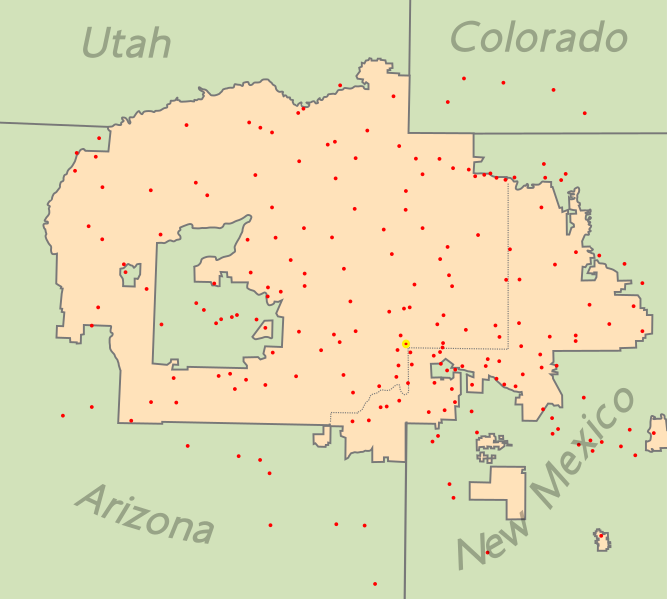
The land area of the Navajo Nation is 24,078.127 square miles (62,362.06 km2), making it by far the largest Indian reservation in the United States. It is almost exactly the same size as the state of West Virginia; it is slightly larger in land area, but slightly smaller if water area is included 24,096.295 square miles (62,409.12 km2).
The 2000 census reported 173,987 Navajo citizens, 58.34% of all ethnic Navajos, living on the Navajo Nation's territory. The Navajo Nation requires a blood quantum of one-quarter for a person to be an enrolled tribal member and to receive a Certificate of Indian Blood.
The history of the tribe is not as extensive as I expected, however the history of the government and reasons for existance were emphasised: "In 1923, a tribal government was established to help meet the increasing desires of American oil companies to lease Navajoland for exploration. Navajo government has evolved into the largest and most sophisticated form of American Indian government. The Navajo Nation Council Chambers hosts 88 council delegates representing 110 Navajo Nation chapters." I expected to see more about the traditions and origins of the tribe, but there is nothing on it. The history covered is from the 1920's onwards, the government, the flag, involvement in ww2 and the museum reccently built.
The situation of the Navajo tribe today is represented positively, with many successes in government/with laws. "Today, the Navajo Nation is striving to sustain a viable economy for an ever increasing population that now surpasses 250,000. In years past, Navajoland often appeared to be little more than a desolate section of the Southwest, but it was only a matter of time before the Navajo Nation became known as a wealthy nation in a world of its own." However other sources on the tribe reflect a grimmer situation. Taken from http://www.navajobusiness.com/fastFacts/Overview.htm
(2000 census)
Median Age: 24

Labor Force: comprised of 28% of the population
Median Household Income: $20,005
Unemployment: 42%
Poverty: 43% lives below the poverty rate
Education (for ages 25+): 56% high school degree
7% college degree
The rate of unemployment and number of people living below the poverty level suggests that economically many of those members of the tribe choosing to live in Navajo nation do not have a good standard of living in contrast to the rest of the U.S. The official trive website would want to put forward a more positive view, partially because a large amount of income on the reservation comes from tourism, and a more 'real' portrayal of poverty and hardship would put tourists off visiting.
No comments:
Post a Comment